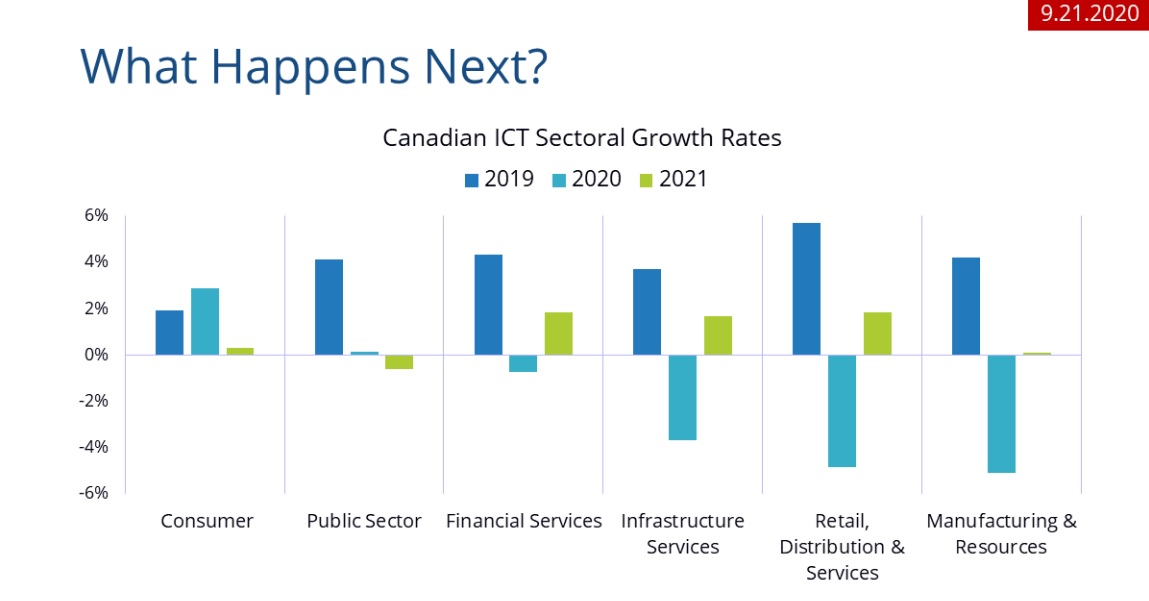A sudden rise in infection rates across Canada – but mainly in Ontario – has forced businesses to rethink their plans to return to the office, and according to IDC Canada’s Nigel Wallis, most businesses are opting for “coronavirus theatre,” prioritizing digital thermometer checkpoints instead of employee contact tracing or smartphone proximity solutions.
“Not all COVID-19 patients have a fever. Many are asymptomatic or presymptomatic. Screening for a symptom that may not appear leads to people assuming that they’re safe and then they neglect better measures like masks and social distancing,” Wallis, IDC Canada’s research vice-president of IoT and industries, explained during a recent webcast. “Even within organizations, tracing those employees who might have had contact with positive cases doesn’t seem to be a priority.”
An August survey asked more than 400 members of IDC Canada’s IT Advisory Panel about the technologies they plan to use to protect employees from COVID-19, and roughly a quarter of all respondents indicated that digital thermometer checkpoints have already been deployed. When it comes to employee contact tracing solutions, IDC Canada cited “depressingly low adoption outside of utilities, telecoms and construction businesses.”

Canada’s official exposure notification app COVID Alert is slowly gaining traction across the country, with Quebec being the latest province to adopt it. As of Sept. 27, COVID Alert has been download 2.7 million times.
“Technology does have a role to play in the pandemic, but we need to embrace the optimal solutions and technology is a part of that,” Wallis said.
Related:
Leaders must do more to reassure Canadians on COVID Alert app, says tech lawyer
Most Canadian employees have accepted the fact that working from home is part of regular life.
A separate IDC Canada survey from June says 43 per cent of employees expect to work from home at least once a week even a year after their office reopens. The number doesn’t change much when asked about six months down the road, hovering at 46 per cent.
“Wholesale abandonment of office space hasn’t happened as much as it could have. But a reduction in both office space square footage and the number of locations is definitely on the table,” Wallis told IT World Canada in a follow-up email, adding this applies to bank branches, as well as tech companies like Shopify.
But removing the office hasn’t slowed down big banks’ modernization efforts. TD Bank, for example, has increased its digital engagement in Canada by 30 per cent since the start of the pandemic, explained Tony Olvet, group vice-president of research during the webcast. The bank also launched more than 100 new capabilities and its virtual assistant logged more than 75,000 customer sessions in the early days of the pandemic.
Olvet says Canadian banks and larger public sector organizations are warming up to open source technology, accelerating the growth of digital innovation in Canada.
ICT spending predictions – not as bleak as before, but not much better
Supported by better-than-expected results in cloud computing, client devices and infrastructure hardware spending, the fall 2020 ICT fall market doesn’t look as bad as it did this spring.
The IaaS market is still humming thanks to above-average quarters from Azure and AWS. Azure revenue jumped nearly 50 per cent year-over-year- that growth has slowed in recent years – while AWS added nearly $10 billion in run rate in the last 12 months. Spending heading into 2021 is expected to increase by 15 per cent. The mad rush in the early days of the pandemic to set up a remote workforce led to some positive growth in client devices spending, but expect those numbers to plummet to -10 per cent heading into 2021.
ICT sectoral growth rates in the infrastructure, retail and manufacturing services industries are projected to grow in 2021 after dropping by several percentage points this year compared to 2019.

